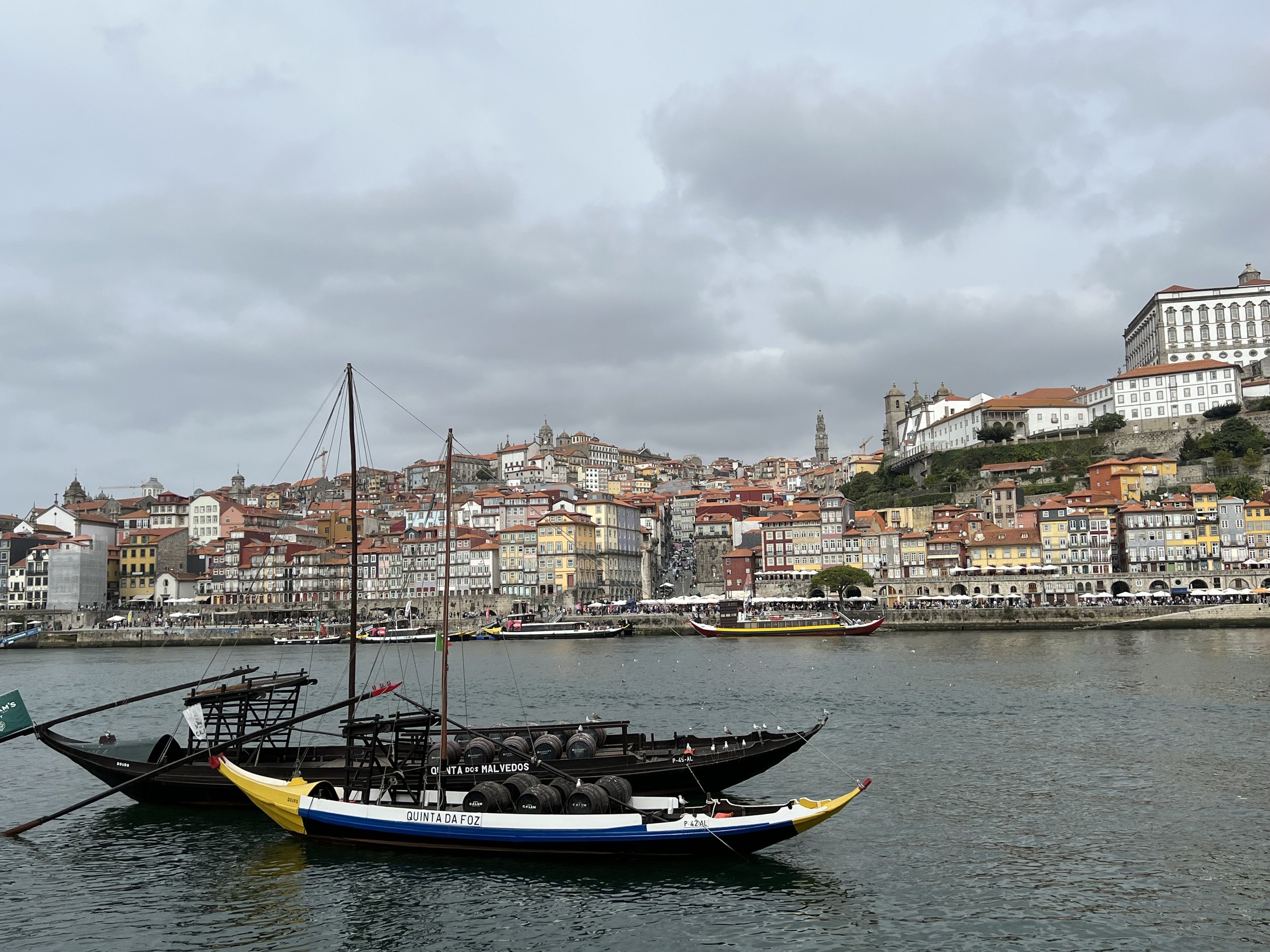Fog bound in Portugal.
Foggy sailing down the Portuguese coast.
Heading south out of the protection of the Rias of north west Spain, we sail south down the Atlantic coast of Portugal. This is not an easy area to cruise, the coast has no little welcoming bays nor dramatic cliffs. It is straight and broken only by river entrances, which can be extremely dangerous with the combination of onshore swell, entrance bars and strong river currents flowing out. Throw in the continuing concern about being attacked by a pod of orca, we did not dawdle in this area.
Entrance to Viana do Castelo
Our first stop was the old town of Viana do Castelo, on the banks of the River Lima. We manoevered past the breakwater and the shallow areas and called the marina on the radio to make sure there was a berth and also to ask them to raise the drawbridge to enter the marina. We were told that the marina was full but there was space for visiting yachts in the old fishing harbor alongside the museum ship Gil Eannes.
This was perfect, as in addition to having the whole dock to ourselves for much of the stay, we were much closer to the center of town. Interestingly, the Gil Eannes acted as a hospital ship for the Portuguese fishing fleet as they fished for cod off the Grand Banks and Norway. It has been fully restored and is open as a museum about the cod fishery. We felt we had covered that well enough this summer, so missed the tour. Instead we climbed the stairs to the Santuário de Santa Luzia, an impressive church with fine panoramic views all around.
Beyond the church at the summit of the hill was the excavated ruins of a substantial Bronze Age and Roman settlement, Citania de Santa Luzia. The older ruins outlined circular dwellings with a protective porch area, maybe to shelter the animals as well as protecting the main entrance. The later Roman ruins showed skillful masonry with double walls. The size of the site was impressive considering less than half is estimated to have been excavated.
We explored the town of Viana do Castelo, even the train station was an interesting building. We had the most delicious pizza lunch and checked out the fort guarding the river entrance. Viana do Castelo was a wonderful little town and we are so glad we stopped there, thanks for the recommendation Peter.
Moving down the coast we sail in some serious fog.
And arrive safely in the marina at Leixòes (pronounced Layshoinsh). This was not the most scenic stop, a commercial port full of container ships and oil terminals, but it was a strategic stop. Porto, our next place of interest to visit is inland on the Rio Duoro. The bar across the entrance is quite dangerous in strong onshore winds and the entrance can be closed to all traffic. We did not want to find ourselves stranded in this way, so we opted to visit Porto by bus from Leixóes.
Leixóes marina
The weather continued foggy and stormy, so we stayed in the marina. It was not very nice, dirty water and terrible facilities. We explored the town and enjoyed the variety of tiled houses, so colorful and every one is different. Classic Portuguese.
We caught the morning bus to Porto which deposited us in the center of town. The streets were packed. We had not seen such crowds in many years (think covid) and it was rather overwhelming. We stayed in the backstreets and enjoyed the multistoried buildings and beautiful tile work. The city straddles the Rio Duoro, the main commercial center is on the north shore and the port wine trading center is to the south. An impressive double level bridge connects the two.
Porto from the south shore of Rio Duoro.
The reason one visits Porto is of course to sample the port. The south side of the river is full of warehouses for all the different port-houses. The streets wind around up the hill with restaurants, tasting rooms and the warehouses themselves. We opt to do a self guided tour in the Fonseca house.
Rooftops in the warehouse district.
All this time we had been watching the weather and reading reports of boats being attacked by orca. It seemed they were particularly active in the area around Lisbon, potentially our next stop. A weather window to sail offshore presented itself. We decided Lisbon will still be there in a few years and we had had enough of the orca situation. We opted to leave the mainland and head for the Atlantic island of Madeira.
Sunset glow, first night at sea.











































